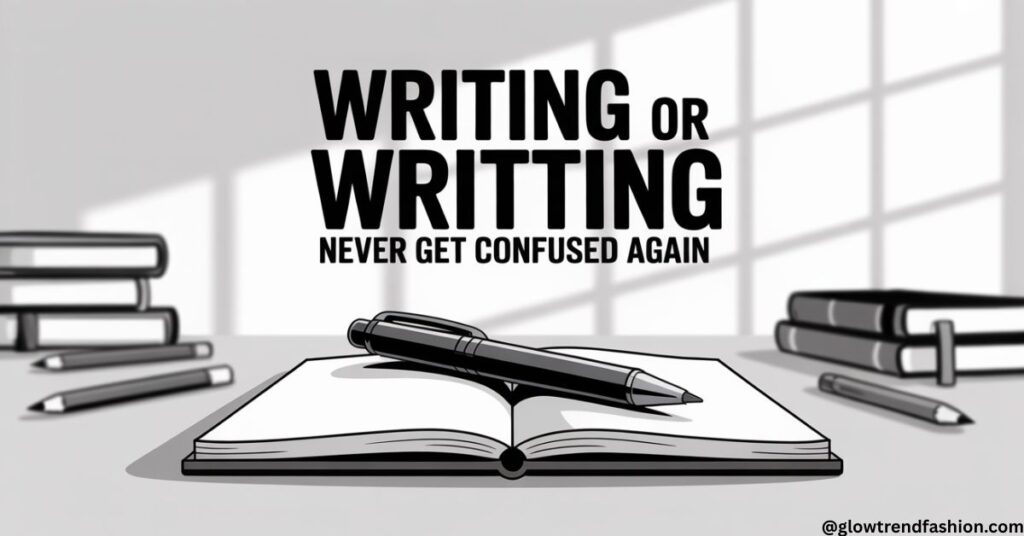Writing or Writting which one is correct? If you’ve ever paused mid-sentence to question the spelling, you’re not alone. English can be tricky, especially when it comes to similar-looking words that seem almost interchangeable. However, in this case, only one version is correct, and the other is a common misspelling.
This article will clear up the confusion once and for all, helping you understand the rules behind the correct form, why the mistake happens, and how to avoid it. Whether you’re a student, professional, or simply trying to sharpen your grammar, this quick guide will ensure you never second-guess yourself when choosing between “writing” and “writting” again.
Why Does This Confusion Exist?

The “writing” versus “writting” dilemma stems from how we naturally expect English spelling rules to work. Most of us learned that when adding “-ing” to a verb ending in a consonant, you double that consonant. Think about these examples:
- Run becomes running
- Stop becomes stopping
- Hit becomes hitting
This pattern creates a mental template. Your brain automatically thinks: “Write ends in ‘t,’ so shouldn’t it become ‘writting’?”
But here’s the catch: Write doesn’t follow this doubling rule. The word “write” ends in a silent “e” – that magical letter that changes everything. When you add “-ing” to words ending in silent “e,” you simply drop the “e” and add the suffix. No doubling required.
Consider these similar transformations:
- Make → making (not makking)
- Take → taking (not takking)
- Give → giving (not givving)
The same orthographic principles apply to “write.” You drop the silent “e” and add “-ing” to get “writing.”
The Definitive Answer: “Writing” Is Always Correct
Let’s settle this debate permanently. “Writing” is the only correct spelling in all varieties of English – American, British, Canadian, Australian, and beyond. No exceptions exist.
“Writting” with two t’s isn’t a regional variation or alternative spelling. It’s simply wrong. Major dictionaries like Merriam-Webster, Oxford, and Cambridge don’t recognize “writting” as a legitimate word.
Real-World Scenarios Where Confusion Strikes
Scenario 1: The Job Application Sarah’s crafting a cover letter for her dream job. She wants to highlight her communication abilities. She types: “My writting skills have improved significantly through years of practice.”
The hiring manager notices immediately. This single typographical error undermines Sarah’s claim about her writing proficiency. It suggests she lacks attention to detail – exactly the opposite impression she wanted to create.
Scenario 2: The Student Essay Marcus submits his English assignment with this sentence: “Shakespeare’s writting influenced countless authors.” His teacher marks it as a spelling error, deducting points from an otherwise solid analysis.
Scenario 3: The Social Media Post Jennifer shares her excitement about a new project: “I’m writting my first novel this year!” Friends politely ignore the mistake, but it diminishes her credibility as an aspiring author.
These scenarios happen daily. The good news? They’re completely preventable.
Understanding What “Writing” Actually Means
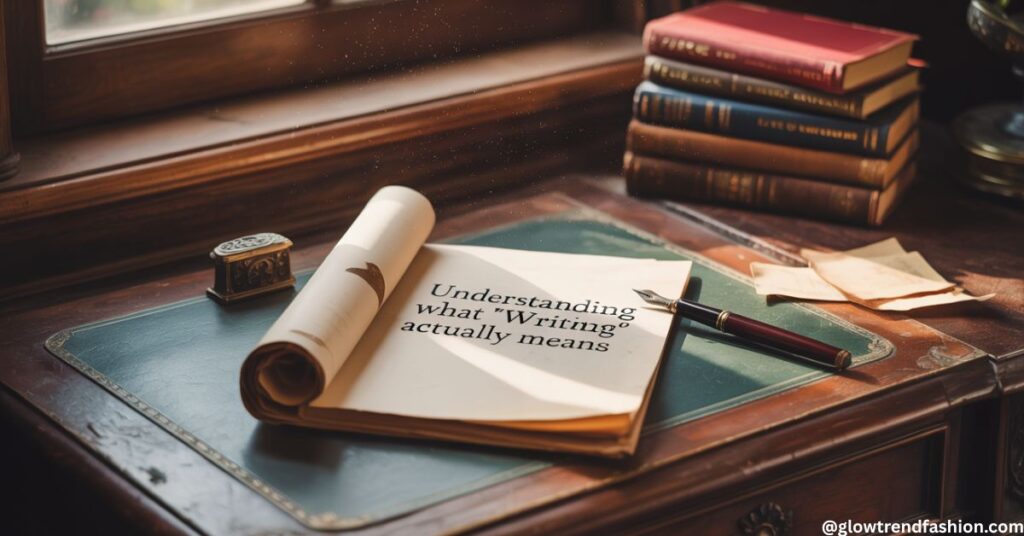
Writing encompasses far more than just putting pen to paper. In its broadest sense, writing means creating readable text to communicate ideas, stories, information, or emotions.
The word functions in multiple grammatical roles:
As a Present Participle
“I am writing a letter to my grandmother.” “She’s writing her dissertation this semester.”
This verb form shows ongoing action. The present participle combines with helping verbs to create progressive tenses.
As a Gerund (Noun Form)
“Writing requires patience and practice.” “His writing has improved dramatically.”
Here, “writing” acts as a noun while retaining some verb-like qualities.
As an Adjective
“She attended a writing workshop last weekend.” “The writing desk belonged to his grandfather.”
Words That Follow Similar Patterns
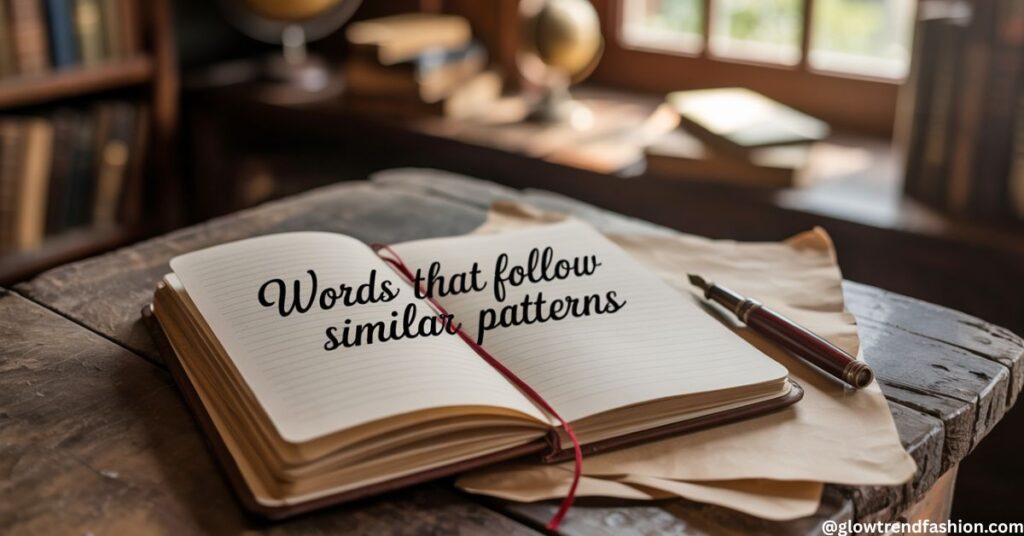
Understanding “writing” becomes easier when you see it as part of a larger pattern. Many English words ending in silent “e” behave identically:
Single-Syllable Examples
- Bite → biting
- Code → coding
- Hope → hoping
- Name → naming
- Race → racing
- Type → typing
Multi-Syllable Examples
- Create → creating
- Debate → debating
- Escape → escaping
- Invite → inviting
- Locate → locating
- Update → updating
Notice the pattern? No consonant doubling occurs when the base word ends in silent “e.” This orthographic rule applies consistently across thousands of English words.
Alternative Words for “Writing”
Expanding your vocabulary prevents overuse of “writing” while demonstrating writing abilities. Consider these synonyms:
Formal Alternatives
- Composition: “Her composition skills impressed the panel.”
- Prose: “His prose flows beautifully.”
- Literature: “She’s studying contemporary literature.”
- Documentation: “Proper documentation prevents misunderstandings.”
Casual Alternatives
- Jotting: “I’m jotting down some ideas.”
- Scribbling: “He’s always scribbling in that notebook.”
- Penning: “She’s penning her memoirs.”
- Drafting: “We’re drafting the proposal tonight.”
Professional Context
- Copywriting: Essential for marketing materials
- Technical writing: Clear, precise documentation
- Creative writing: Fiction, poetry, scripts
- Academic writing: Research papers, dissertations
Practical Examples in Context
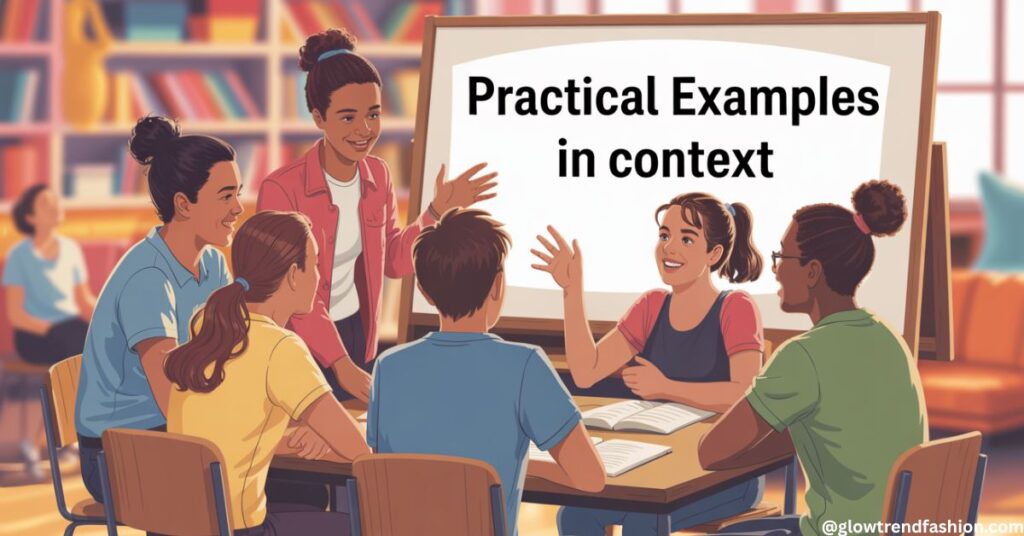
Let’s explore how “writing” appears in various real-world situations:
Educational Settings
“The writing assignment challenged students to analyze complex themes.” “Writing skills development requires consistent practice and feedback.” “Her writing technique showed remarkable improvement over the semester.”
Professional Environments
“Proper usage of grammar rules enhances professional communication.” “The team’s writing proficiency contributed to successful client presentations.” “Correct application of spelling standards demonstrates attention to detail.”
Creative Pursuits
“Writing talent manifests differently across genres and styles.” “His penmanship reflects years of careful practice.” “Language tools help writers refine their craft.”
The Etymology Behind “Write” and “Writing”
Understanding word origins provides insight into correct spelling patterns. “Write” traces back to Old English “wrītan,” which originally meant “to scratch” or “to carve.” Ancient peoples literally scratched symbols into stone, wood, or clay tablets.
The word evolved through Middle English as “writen” before settling into modern “write.” Throughout these transformations, the core spelling remained consistent – no double consonants appeared.
This historical perspective explains why “write” + “-ing” = “writing” feels natural once you understand the etymological development. The spelling guidelines we follow today reflect centuries of linguistic evolution.
Common Mistakes Beyond “Writting”
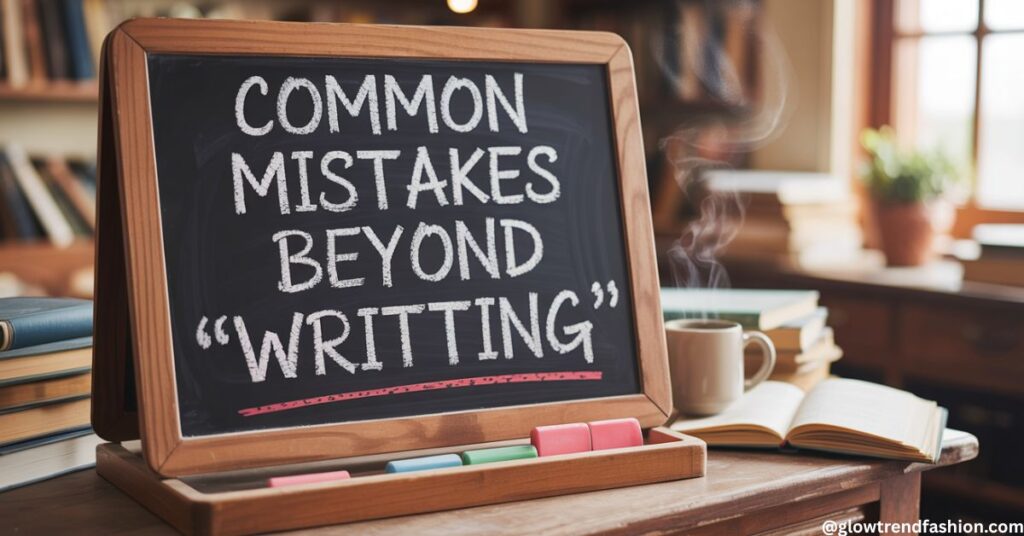
Writing errors extend beyond simple misspelling. Watch for these frequent errors:
Similar Pattern Mistakes
- “Ridding” vs. “riding” (correct: riding a bike)
- “Bitting” vs. “biting” (correct: biting an apple)
- “Siting” vs. “sitting” (correct: sitting in a chair)
Related Grammar Issues
- Incorrect: “I’m use to writing daily.”
- Correct: “I’m used to writing daily.”
- Incorrect: “Writing is a skill that come naturally.”
- Correct: “Writing is a skill that comes naturally.”
Tools and Strategies for Error Prevention
Modern language aids make avoiding spelling inaccuracies easier than ever:
Digital Solutions
- Grammar checkers: Most word processors highlight spelling blunders automatically
- Browser extensions: Tools like Grammarly catch errors across websites
- Mobile apps: Smartphone keyboards often suggest accurate spelling
Traditional Methods
- Writing handbook: Keep reference materials nearby
- Dictionary verification: When in doubt, look it up
- Proofreading: Always review before publishing
Memory Techniques
Create mental associations to remember proper spelling:
- “Write” ends in silent “e” – drop it for “writing”
- Think: “I write, I am writing” (no double t)
- Remember: “Right writing requires removing the ‘e'”
Advanced Applications and Professional Standards
Precise spelling matters more in certain contexts:
Academic Writing
Universities expect exact spelling in all submissions. Writing slip-ups can impact grades and credibility. Graduate programs particularly scrutinize writing accuracy.
Business Communication
Professional writing demands proper use of language rules. Emails, reports, and presentations reflect your competence. Spelling mistakes in client communications can damage relationships.
Creative Industries
Publishers, editors, and literary agents notice writing faults immediately. Correct usage demonstrates professionalism and respect for the craft.
Building Long-Term Writing Excellence

Developing strong writing abilities requires more than avoiding typical mistakes. Consider these growth strategies:
Regular Practice
- Daily writing: Even brief journal entries help
- Diverse formats: Try emails, stories, reports
- Feedback seeking: Ask others to review your work
Continuous Learning
- Grammar rules evolve – stay updated
- Spelling norms occasionally change
- Language tools improve regularly
Professional Development
- Writing workshops: Learn from experienced instructors
- Online courses: Flexible learning options
- Writing groups: Peer support and accountability
Technology’s Role in Modern Writing
Linguistic tools have transformed how we approach writing proficiency:
Artificial Intelligence
Modern grammatical tools use AI to catch recurring errors and suggest improvements. These linguistic aids go beyond simple spell-check to analyze context and meaning.
Collaborative Platforms
Cloud-based writing manual resources allow real-time collaboration and editing. Teams can maintain consistent spelling standards across projects.
Mobile Integration
Smartphones now provide sophisticated writing instructions through predictive text and autocorrect features. However, don’t rely entirely on technology – understanding orthographic rules remains essential.
The Psychology of Spelling Confidence
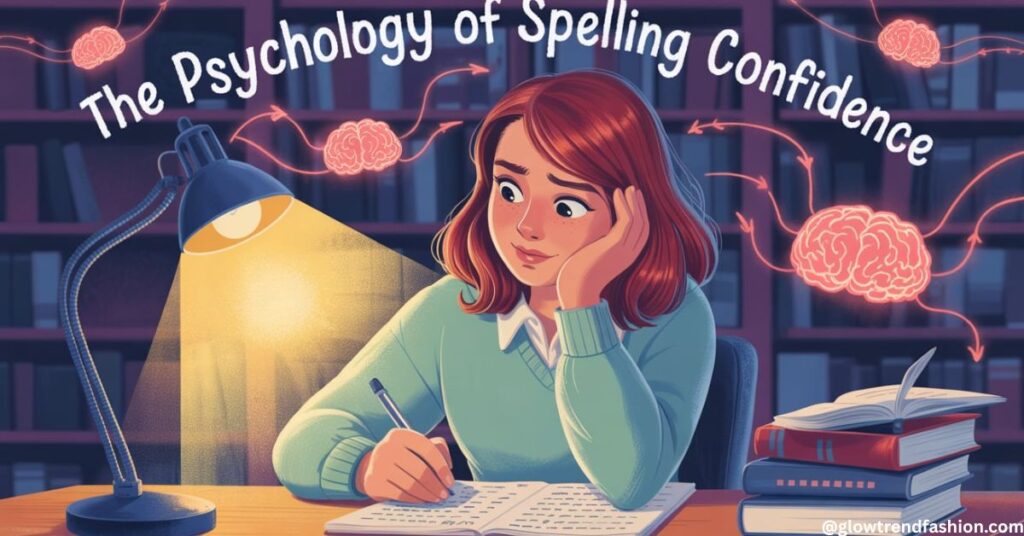
Writing anxiety often stems from fear of making usual mistakes. Building confidence requires:
Accepting Imperfection
Everyone makes typical errors occasionally. The goal isn’t perfection but consistent improvement and awareness.
Systematic Learning
Focus on spelling guidelines patterns rather than memorizing individual words. Understanding grammatical structure helps prevent multiple error types.
Positive Reinforcement
Celebrate improvements in your writing technique. Acknowledge progress in avoiding common mistakes and developing stronger writing talent.
Frequently Asked Question
Which is correct, writting or writing?
Writing is correct. “Writting” with two t’s is never correct in English.
Here’s why: The word “write” ends with a silent “e.” When you add “-ing” to words ending in silent “e,” you simply drop the “e” and add the suffix. You don’t double the consonant.
The rule: write → writing (drop the silent “e”)
This follows the same pattern as:
- Make → making
- Take → taking
- Give → giving
Remember: “Writting” isn’t a regional spelling or alternative form – it’s simply a spelling mistake that appears frequently online and in writing. Always use “writing” whether you’re talking about the act of putting words on paper, developing writing skills, or any other context.
So if you’re writing a letter, improving your writing abilities, or discussing writing techniques, it’s always spelled with one “t” – writing.
Is it written or writen?
Written is correct. “Writen” is incorrect.
Here’s the key difference: “Written” is the past participle of “write,” while “writing” (from your previous question) is the present participle.
The pattern:
- Base form: write
- Present participle: writing (drop the “e,” add “-ing”)
- Past participle: written (drop the “e,” add “-en”)
Examples of correct usage:
- “I have written three letters today.”
- “The book was written by my favorite author.”
- “She had written her thesis before the deadline.”
Why the confusion happens: People sometimes think “writen” looks right because they’re applying the same “drop the silent e” rule from “writing.” But the past participle requires “-en,” not just “-n.”
Similar patterns:
- Take → taken (not “takn”)
- Give → given (not “givn”)
- Drive → driven (not “drivn”)
So remember: when you need the past participle form (often used with “have,” “has,” “had,” or “was/were”), it’s always written with double “t.”
What is the spelling of writing in American English?
The spelling of “writing” in American English is writing – with one “t.”
This is exactly the same as in British English, Canadian English, Australian English, and all other varieties of English. There’s no difference in spelling across English dialects for this word.
American English spelling: writing British English spelling: writing All other English varieties: writing
Unlike some words where American and British spellings differ (like “color/colour” or “organize/organise”), “writing” maintains the same spelling worldwide.
Key points:
- Always one “t” in the middle
- Never “writting” with double “t”
- Universal spelling across all English-speaking countries
- Follows standard American spelling rules for dropping silent “e” before “-ing”
Common American usage examples:
- “I’m working on my writing skills.”
- “She’s writing her college application essays.”
- “Creative writing is his favorite subject.”
So whether you’re in New York, London, Toronto, or Sydney, “writing” is spelled the same way – w-r-i-t-i-n-g.
What is grammatically correct writing?
Grammatically correct writing follows established language rules and conventions to create clear, effective communication. Here’s what makes writing grammatically sound:
Core Elements of Grammatical Correctness
Subject-verb agreement forms the foundation. Your subjects and verbs must match in number:
- “The student writes essays” (singular)
- “The students write essays” (plural)
Proper sentence structure ensures clarity. Complete sentences need both a subject and predicate:
- Correct: “She completed the assignment.”
- Incorrect: “Completed the assignment.” (missing subject)
Consistent verb tenses maintain logical flow. Don’t jump between past and present unnecessarily:
- Correct: “I walked to the store and bought groceries.”
- Incorrect: “I walked to the store and buy groceries.”
Punctuation and Mechanics
Correct punctuation guides readers through your ideas:
- Use periods for complete thoughts
- Apply commas for pauses and list separation
- Employ semicolons to connect related independent clauses
Proper capitalization follows standard rules:
- Capitalize sentence beginnings
- Capitalize proper nouns and titles
- Follow specific style guide requirements
Advanced Grammatical Concepts
Pronoun clarity prevents confusion. Make sure pronoun references are clear:
- Unclear: “When John met Bill, he was excited.”
- Clear: “When John met Bill, John was excited.”
Modifier placement affects meaning. Keep modifiers close to what they modify:
- Confusing: “Running quickly, the finish line appeared.”
- Clear: “Running quickly, she saw the finish line appear.”
Common Grammatical Pitfalls
Sentence fragments lack essential components:
- Fragment: “Because I was tired.”
- Complete: “I went to bed early because I was tired.”
Run-on sentences combine too many ideas without proper punctuation:
- Run-on: “I love writing it helps me express myself clearly.”
- Corrected: “I love writing because it helps me express myself clearly.”
Style and Clarity Considerations
Active voice typically creates stronger, clearer sentences:
- Passive: “The report was written by the team.”
- Active: “The team wrote the report.”
Parallel structure maintains consistency in lists and series:
- Inconsistent: “She enjoys reading, writing, and to paint.”
- Parallel: “She enjoys reading, writing, and painting.”
Context-Dependent Grammar
Formal vs. informal contexts require different approaches:
- Academic writing: Stricter adherence to formal rules
- Creative writing: More flexibility for stylistic effect
- Business communication: Professional but accessible tone
Audience considerations shape grammatical choices:
- Technical writing may require specialized terminology
- General audiences need simpler, more direct language
- International readers might need extra clarity
Tools for Maintaining Grammatical Correctness
Grammar checkers catch many errors but aren’t perfect. They work best when combined with human judgment and understanding of context.
Style guides provide specific rules for different writing contexts:
- APA for academic psychology papers
- MLA for literature and humanities
- Chicago for history and arts
- AP for journalism
Professional editing ensures the highest standards, especially for published or professional materials.
The Balance Between Correctness and Communication
Grammatically correct writing isn’t just about following rules mechanically. The best writing balances technical accuracy with effective communication. Sometimes, breaking a rule serves a purpose – like using sentence fragments for emphasis or starting sentences with “and” for flow.
Remember: Grammar serves communication, not the other way around. Your primary goal is conveying ideas clearly and persuasively while respecting the conventions that help readers understand your message.
Perfect grammar without clear thinking produces technically correct but meaningless text. Clear thinking with minor grammatical errors often communicates more effectively than perfect but confusing prose.
Conclusion
The “writing” versus “writting” confusion ends here. “Writing” is always correct – no exceptions, no alternatives, no debate. The double-t version simply doesn’t exist in proper English.
Remember the key principle: words ending in silent “e” drop that letter before adding “-ing.” This orthographic rule applies to thousands of English words, making it worth mastering.
Your writing skills improve when you understand these fundamental spelling rules rather than memorizing individual cases. Proper application of these principles prevents spelling errors across your entire vocabulary.

Isa Bella is an experienced fashion blogger at Glow Trend Fashion, passionate about style, trends, and personal expression. With years of expertise in the fashion industry, she shares insightful tips, fashion guides, and the latest style updates.

